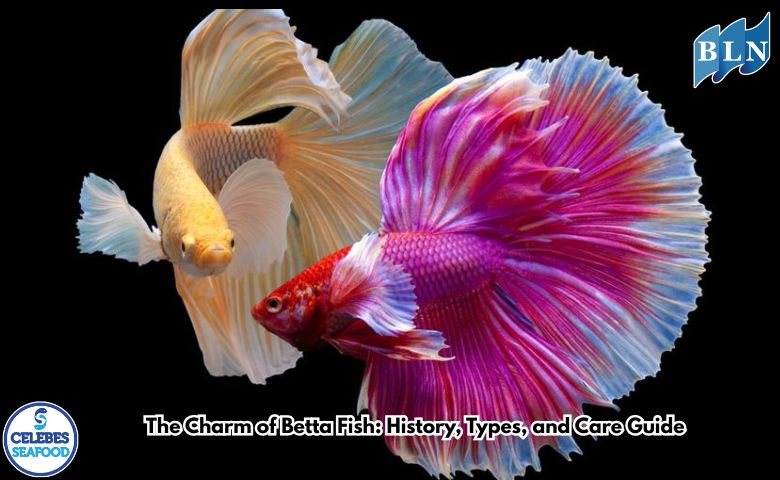The Charm of Betta Fish: History, Types, and Care Guide
By. Azizah - 06 Aug 2025
lautnusantara.com Betta fish, also known by the scientific name Betta splendens, are one of the most popular freshwater ornamental fish in the world. Their stunning beauty, striking colors, and long, dance-like fins make them a favorite among hobbyists. More than just fish, bettas have a long history and unique characteristics that make them special.
A. Brief History of Betta Fish
Betta fish originate from the shallow waters of Southeast Asia, such as Thailand, Cambodia, and Vietnam. Historically, these fish were initially known not for their beauty, but for their aggressive nature. In Thailand, wild betta fish were often pitted against each other for entertainment, similar to cockfighting. This tradition was so ingrained that betta fish were nicknamed "Siamese fighting fish."
In the late 19th century, these fish began to be introduced to the Western world. Breeders and hobbyists began focusing on selective breeding to produce more beautiful color variations and fin shapes. From this point on, betta fish transformed from fighting animals to charming ornamental fish.
B. The Enchanting Variety of Betta Fish
The diversity of modern betta fish is the result of centuries of careful breeding. Here are some of the most popular betta fish species based on their fin shape:
- Halfmoon: As the name suggests, this fish's caudal fin extends to form a full semicircle (180 degrees). This species is very popular for its elegant and dramatic appearance.
- Plakat: "Plakat" comes from the Thai word for "fighting fish." This species has short, sturdy fins, reflecting its original form as a fighting fish. Plakats are highly prized for their agile movements and intense colors.
- Crowntail: This fish's fins have a "crown" or "comb" at the end, a result of protruding fin bones. Crowntails were first bred in Indonesia and are highly prized for their unique and exotic appearance.
- Veiltail: This species is one of the most common. Veiltail bettas have long, drooping caudal fins that resemble a veil.
- Double Tail: Its distinctive feature is its split tail fin. This species has a unique and attractive appearance, although it is sometimes more susceptible to health problems.
C. Simple Care Guide for Beginners
Despite their graceful appearance, betta fish are actually quite easy to care for, making them an ideal choice for beginners.
- Aquarium: Betta fish don't require a large aquarium. A minimum of 5 liters is sufficient for one fish. Make sure the aquarium has a lid, as betta fish are known to jump. Contrary to popular belief, keeping bettas in very small containers (such as jars) is not recommended as it can affect their health and quality of life.
- Water Quality: Maintain a stable water temperature between 24-27°C. Clean water quality is essential. Change the water regularly, about 25-50% every 3-4 days, depending on the size of the aquarium and whether or not there is a filter. Use settled water or water conditioner to remove chlorine.
- Feeding: Betta fish are carnivorous. Feed betta-specific food in the form of pellets or flakes. Feed 2-3 pellets once a day. Occasionally, offer live or frozen food such as mosquito larvae or bloodworms for variety and to enhance their color. Avoid overfeeding, as leftover food can pollute the water and cause health problems.
- Decoration: Add aquatic plants, rocks, or small caves for hiding places. This will make your fish feel more secure and reduce stress. Make sure none of the decorations have sharp edges that could damage their long fins.
With proper care, betta fish can live healthy and display their full potential. Keeping these fish isn't just about caring for a pet; it's also about appreciating the beauty of life in an aquarium.
If you are interested in our Coral Trout Fillet Skin On, CORAL TROUT WGG WHOLE GILLED GUTTED, TOMATO COD WHOLE GILLED GUTTED please do not hesitate to contact us through email and/or whatsapp.







